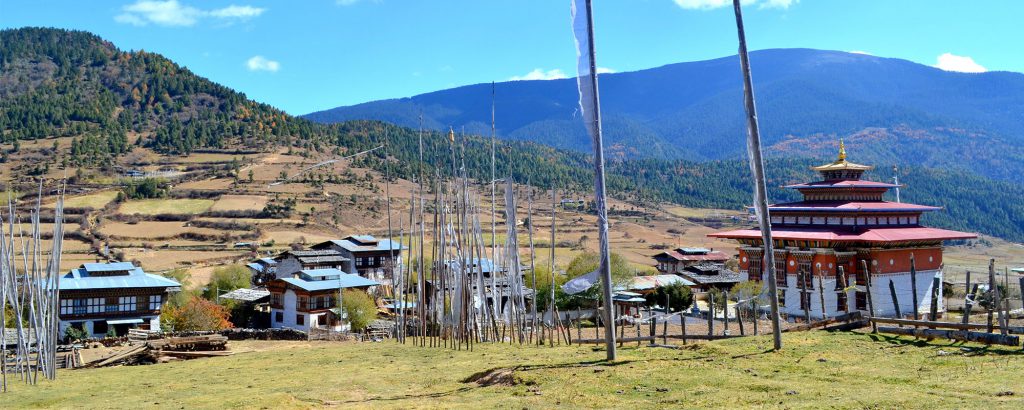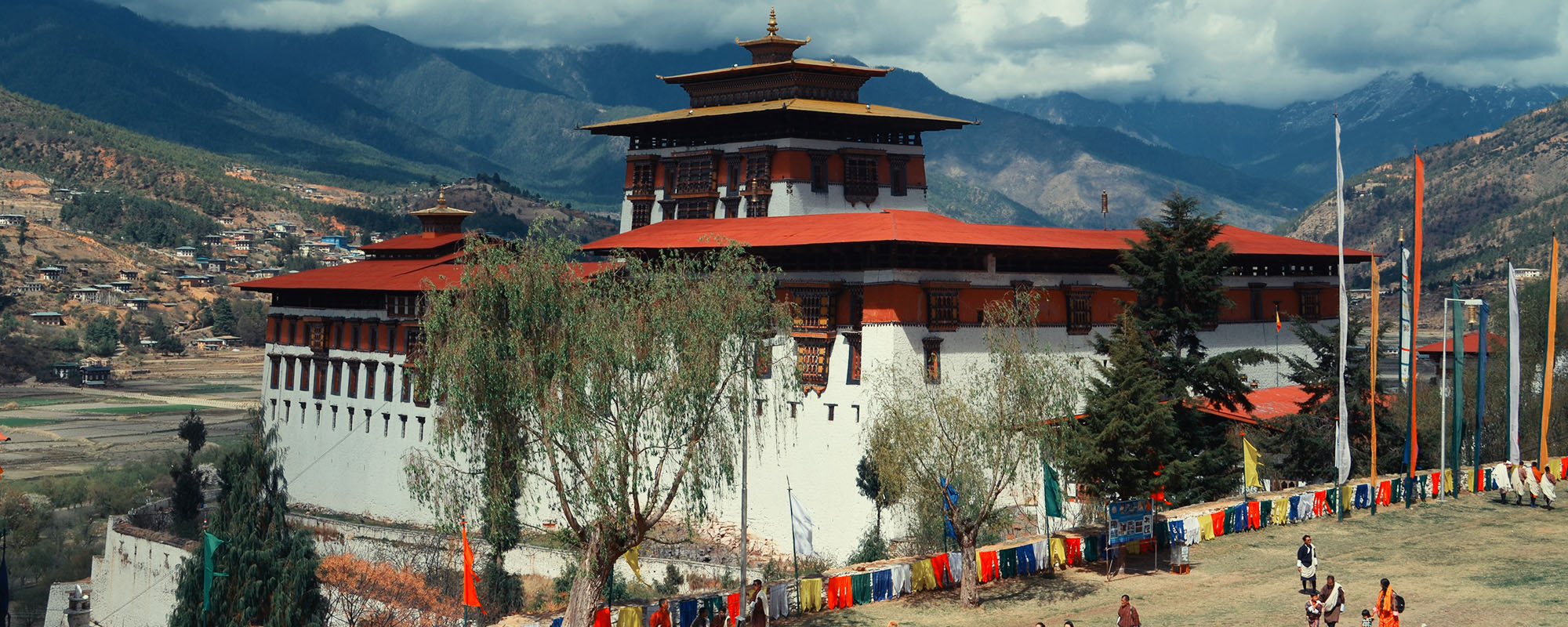
A sparsely populated country bordered by India to the south, and China to the north, Bhutan has long maintained a policy of strict isolationism, both culturally and economically, with the goal of preserving its cultural heritage and independence.
The imposing white washed structure, as seen now, has undergone several renovations over the centuries following fires and earthquakes. Subsequent to introduction of the Drukpa Kargyu lineage by Lama Phajo and Zhabdrung acquiring the Dzong in 1641, the Dzong was renamed as Tashichhoe Dzong.
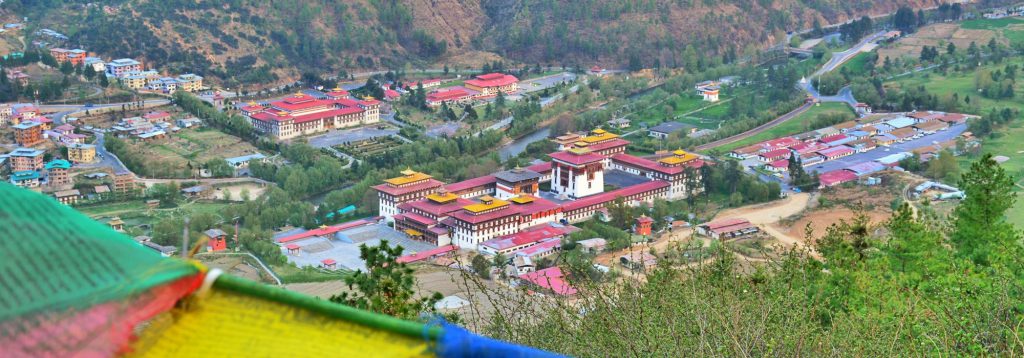
The winter capital was at Punakha Dzong, a dzong established northeast of Thimphu in 1527. The kingdom was divided into three regions (east, central, and west), each with an appointed Penlop, or governor, holding a seat in a major dzong. Districts were headed by Dzongpon, or district officers, who had their headquarters in lesser Dzong. The Penlop were combination tax collectors, judges, military commanders, and procurement agents for the central government. Their major revenues came from the trade between Tibet and India and from land taxes.
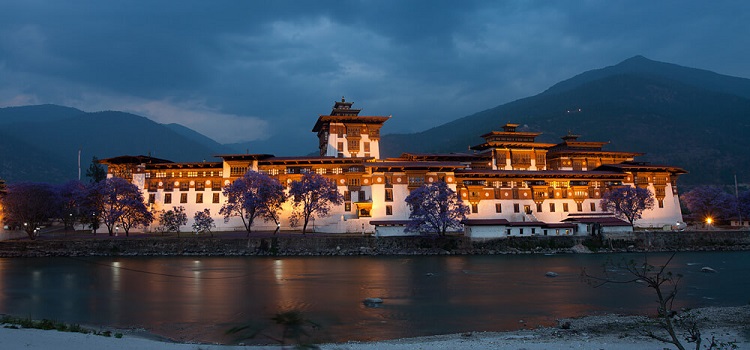
The history of the temples at Kurje is associated with Sendha Gyab, popularly known as Sindhu Raja and the visit of Guru Rinpoche to Bumthang in 746 AD. Sendah Gyab invited Guru Rinpoche Nepal. The reason behind the invitation was to subdue the evil spirits and demons harming the people and especially to get back the King’s soul from the guardian deity named Shelging Karpo who had cursed the King with a terrible illness.
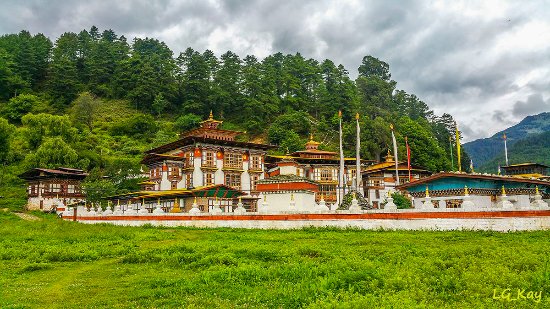
Upon this invitation, Guru Rinpoche came to Bumthang and meditated there in a cave named Dragmar Dorji Tsegpa, meaning a red colored cave that resembles a pile of Vajras (Dorjis). After subduing the evil spirits and demons and having restored the soul of the King, imprints of the Guru Rinpoche’s body remained. Thereafter, the name came to be known as Kurje meaning-imprint of the body. The present place of the Lhakhang remains as a blessed and historical site.
Chimi Lhakhang or Monastery or temple, is a Buddhist monastery in Punakha District, Bhutan.Located near Lobesa it stands on a round hillock and was built in 1499 by the 14th Drukpa Hierarchy, Ngawang Choegyel, after the site was blessed by the “Divine Madman” the maverick saint Drukpa Kunley (1455–1529) who built a chorten on the site.
In founding the site it is said that Lama Drukpa Kunley subdued a demon of Dochu La with his “magic thunderbolt of wisdom” and trapped it in a rock at the location close to where the chorten now stands. He is also the saint who advocated the use of phallus symbols as paintings on walls and as flying carved wooden phalluses on house tops at four corners of the eves.
The monastery is the repository of the original wooden symbol of phallus that Kunley brought from Tibet. This wooden phallus is decorated with a silver handle and is used to bless people who visit the monastery on pilgrimage, particularly women seeking blessings to beget children.
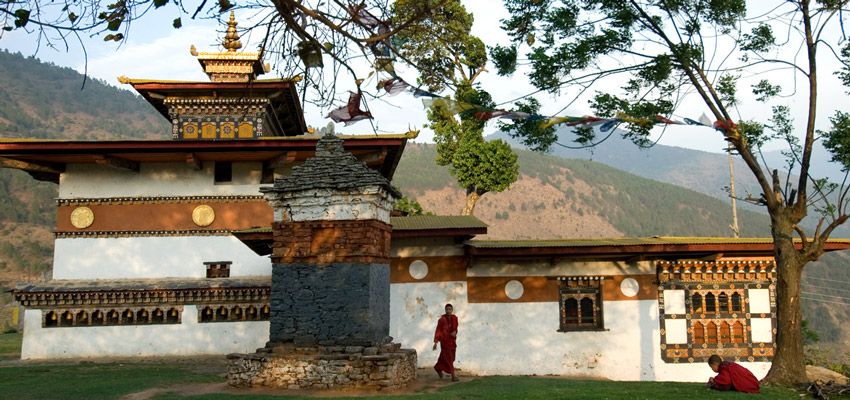
It is a gigantic Shakyamuni Buddha statue under construction in the mountains of Bhutan. The statue will house over one hundred thousand smaller Buddha statues, each of which, like the Buddha Dordenma itself, will be made of bronze and gilded in gold.
The Buddha Dordenma is sited amidst the ruins of Kuensel Phodrang, the palace of Sherab Wangchuck, the thirteenth Desi Druk, overlooking the southern approach to Thimphu, the capital of Bhutan. Upon completion, it will be one of the largest Buddha stupas in the world, at a height of 169 feet (51.5 meters).
Apart from commemorating the centennial of the Bhutanese monarchy, it fulfills two prophecies. In the twentieth century, the renowned yogi Sonam Zangpo prophesied that a large statue ofeither Padmasambhava, Buddha or of a phurba would be built in the region to bestow blessings, peace and happiness on the whole world. Additionally, the statue is mentioned in the ancient terma of GuruPadmasambhava himself, said to date from approximately the eighth century, and recovered some 800 years ago by Terton Pema Lingpa.
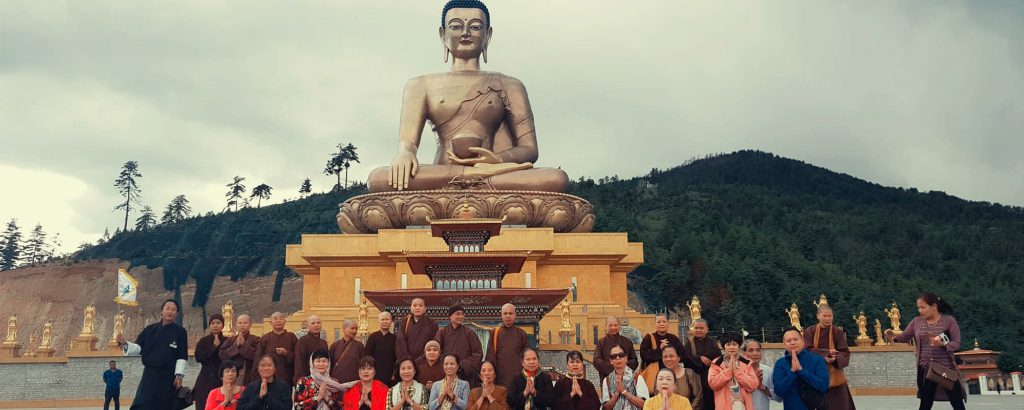
Phobjikha Valley is a vast U-shaped glacial valley, also known as Gangtey Valley named after the impressive Gangteng Monastery of the Nyingma sect in central Bhutan, where the graceful black-necked cranes in Bhutan (Grus nigricollis) from the Tibetan Plateau visit the valley during the winter season to roost. On arrival in the Phobjikha Valley in the last week of October, the black-necked cranes circle the Gangteng Monastery three times and also repeat the process while returning to Tibet.
The broad valley with its best-known marshland in Bhutan is popular for its scenic splendor and cultural uniqueness. The valley is rich in faunas biodiversity and has, apart from the globally threatened black-necked cranes Grus nigricllis, 13 other globally threatened species.
Within the ambit of the valley, an area of about 163 square kilometers (63 sq mi) has been declared a protected area, which is managed by the Royal Society for the Protection of Nature (RSPN), for the protection of nature, authorized to manage, on lease basis, by the Ministry of Agriculture.
Trongsa Dzong is the largest Dzong fortress in Bhutan, located in Trongsa (formerly Tongsa) in Trongsa district, in the centre of the country. Built on a spur overlooking the gorge of the Mangde River, a temple was first established at the location in 1543 by the Drukpa lama, Ngagi Wangchuk son of Ngawang Chhojey. In 1647, his great-grandson Shabdrung Ngawang Namgyal , constructed the first dzong to replace it.
Trongsa Dzong, the largest dzong at a striking location, is an important administrative building, providing the headquarters of the government of Trongsa District. Trongsa provides a strategic central location to control Bhutan and for centuries it was the seat of the Wangchuck dynasty of Penlops (Governors) who effectively ruled over much of eastern and central Bhutan, and from 1907 have been Kings of Bhutan.

Paro Taktsang is the popular name of Taktsang Palphug Monastery (also known as Tiger’s Nest), a prominent Himalayan Buddhist sacred site and temple complex, located in the cliff side of the upper Paro valley, in Bhutan.
A temple complex was first built in 1692, around the Taktsang Senge Samdup (stag tshang seng ge bsam grub) cave where Guru Padmasambhava is said to have meditated for three years, three months, three weeks, three days and three hours in the 8th century. Padmasambhava is credited with introducing Buddhism to Bhutan and is the tutelary deity of the country. Today, Paro Taktsang is the best known of the thirteen Taktsang or “Tiger lair” caves in which he meditated.
This region that spans from 2,600-4,500 m is the religious heartland of the nation and home to some of its oldest Buddhist temples and monasteries. Tales of Guru Padmasambhava and the tertons (“religious treasure-discoverers”) still linger in this sacred region.
Bumthang Dzongkhag consists of four main valleys, Ura, Chumey, Tang and Choekhor. Choekhor is the largest of the four and is widely considered as ‘Bumthang Valley’. The valleys are broad and gentle carved by the ancient glaciers. The wide and scenic valleys draws a large number of tourists each year.
This dzongkhag is one of the most richly endowed districts in terms of historical and spiritual legacy. Some of Bhutan’s oldest and most venerated temples are found in Bumthang, including Jambey Lhakhang. According to legend this ancient temple was built by the Tibetan king Songtsen Gampo in 659 A.D. as part of a chain of 108 simultaneously constructed temples in order to subdue an evil demoness that lay over the Himalayan region. It is the oldest lhakhang in Bhutan. There are numerous other temples and shrines worth visiting in Bumthang and many of them are linked to Guru Rinpoche’s visit in 746 A.D.
The fertile valleys of Bumthang are covered in fields of buckwheat, rice and potatoes. Apple orchards and dairy farms are also common sights here. This serene region is one of the most peaceful places in the kingdom.
